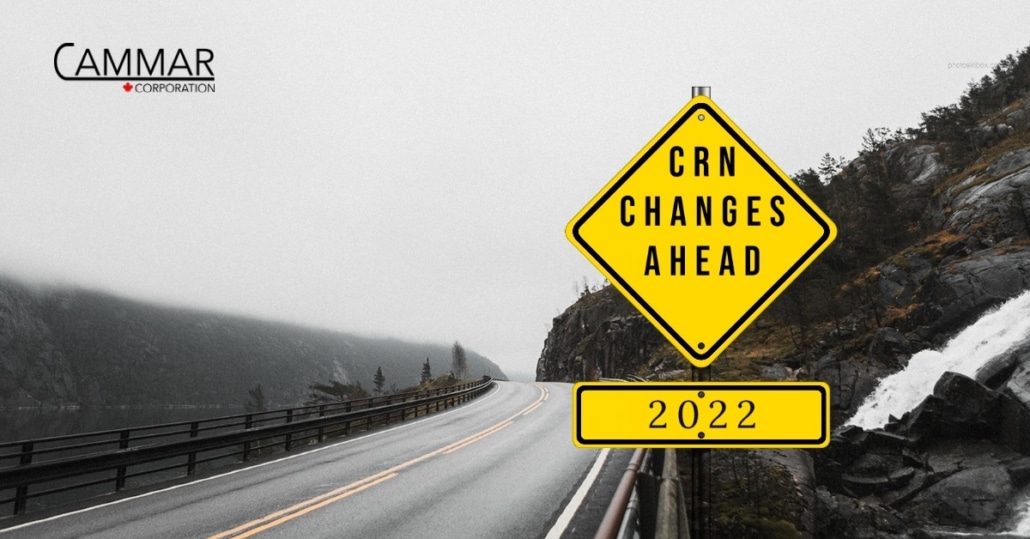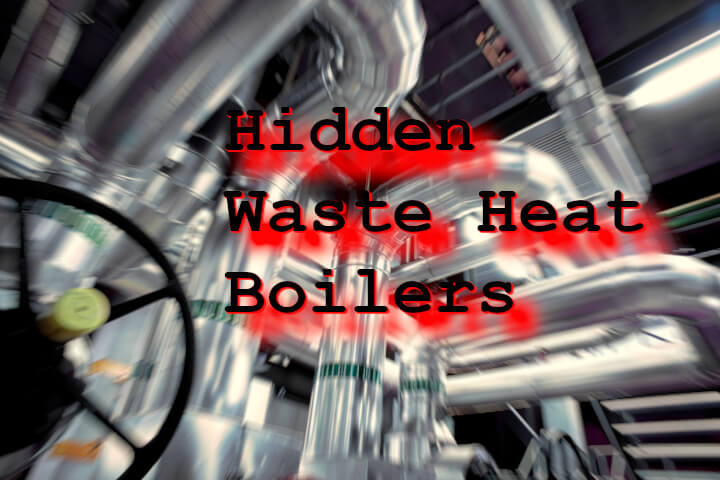As we all embark on 2022, there are several noteworthy topics to consider as you navigate the CRN regulatory landscape, pursuant to acquiring CRN number registration and marketing or using your pressure equipment in Canada. From CAMMAR Corporation’s perspective, the most significant CRN topics of interest include ASME code changes, engineering regulator trends, and the resulting increase of required engineering involvement. Collectively, these effect CRN Registration Changes in 2022.
Significant Code Changes
ASME Section VIII-1
As of January 1, 2022, the 2021 edition of ASME Section VIII-1 is current.
Changes in the 2021 ASME Section VIII-1 code now reference greater involvement of the engineering profession.
With mandatory Appendix 10, calculations justifying pressure vessel designs must now be verified and in accordance with the quality control program of the manufacturer, under the responsible charge of a certified engineer, qualified engineer, or qualified designer. A certifying engineer in responsible charge must be either chartered, registered, or licensed. Mandatory Appendix 47 clarifies what the qualifications and experience for a certifying engineer, engineer, or designer in responsible charge are required to be, according to ASME.
Though ASME codes have stated for a long time that proper use of code rules requires engineering judgement, the new requirements noted above emphasize and clarify this fact. Per code, engineering involvement is now mandatory when designing and manufacturing pressure vessels.
Further to just pressure vessel CRN registration requirements and related equipment permits issued by jurisdictional authorities, trends amongst Canadian professional engineering regulators emphasize professional authentication requirements in a significantly more specific manner than ASME. See below for more details.
ASME B31.3-2020
As of January 2022, the 2020 Edition of ASME B31.3 is current.
Changes most notably occurred to Chapter IX, in relation to high pressure piping system design. Options for pressure boundary justification of unlisted components have been reduced, and a significant amount of further complexity is now required. CAMMAR Corporation has assisted companies with navigating through ASME B31.3 Chapter IX, with unlisted components, to obtain CRN registrations.
It should always be remembered that, as a general rule, proof testing is strongly preferred by Canadian regulators and many others over finite element analysis (FEA), since properly performed physical testing is not ever subject to modelling error, invalidation, or lack of verification. From evaluations CAMMAR Corporation has made, FEA models available these days are certainly not all of equal quality. And based on experience, CAMMAR Corporation advises that despite the provisions of B31.3 paragraph K304.7.2(a), extensive service experience of equipment for pressure boundary justification is difficult to properly document and attest. Accordingly, ASME B31.3 paragraph K304.7.2 (a) is considered unacceptable to Canadian regulators for CRN registration, paragraph K304.7.2(b) is acceptable for design justification only if code rules for calculations are inapplicable, and paragraph K304.7.2(c) is only acceptable provided that proof testing is infeasible for reasons satisfactory to the regulator.
ASME Section VIII-2 analysis is no longer an optional approach for justifying the pressure boundaries of unlisted components in ASME B31.3 Chapter IX high pressure piping systems. Instead, ASME Section VIII-3 (including cyclic analysis and fracture mechanics analysis as warranted) is now mandatory for Chapter IX designs if pressure boundary design justification beyond code rules is necessary, when proof testing is infeasible for good reason.
Similarly, and though cyclic analysis is still mandatory for ASME B31.3 Chapter IX deigns regardless of unlisted components, ASME Section VIII-2 is no longer an option for cyclic analysis, and ASME Section VIII-3 rules for cyclic analysis (including fracture mechanics as warranted) is now required, per ASME B31.3 paragraph K304.8.
Accompanying the above noted changes are some notable increases in the allowable stresses of materials for Chapter IX use, as listed in ASME B31.3 Table K-1.
Canadian Engineering Regulator Changes
For proper use of pressure equipment that relies on engineering theory and judgement, engineering regulators are making it clearer that having just a CRN is now insufficient for design use. CRN registration is necessary, but not enough to properly use pressure equipment. Engineered pressure equipment designs must be professionally authenticated in accordance with the engineering authority having jurisdiction, where the equipment is to be used. This advice certainly seems to run contrary to popular knowledge and practice.
There are two kinds of regulators that exert governance over pressure equipment in Canada: pressure equipment regulators; and engineering regulators. Requirements of pressure equipment regulators like TSBC in British Columbia, ABSA in Alberta, and TSSA in Ontario, are more commonly considered. Engineering regulator requirements like those of EGBC in British Columbia, APEGA in Alberta, and PEO in Ontario are at least as important though they are not as frequently discussed.
Over the last year or so, the perspectives of engineering associations about professional responsibilities for pressure equipment (pressure vessels, boilers, fittings, and piping systems), seem to be coming into clearer focus. And that focus is somewhat different than what the pressure equipment regulators seem to envision.
For example, in British Columbia (BC):
The engineering regulator (EGBC) now indicates that for pressure vessels engineered in and destined for use in BC, designs and engineering documentation must be professionally authenticated (stamped) by a professional engineer registered with EGBC. Engineering in BC is now governed by the new BC Professional Governance Act and the BC Engineering and Geoscience Regulation of the new Act. And though the new statute and regulation seem to still rely on some aspects of the replaced BC Engineers and Geoscientists Act, it seems to indicate that if any pressure vessel is destined for use in BC, then its design documentation must be authenticated by a professional engineer registered in BC. For clarification and confirmation or exceptions, EGBC should be contacted directly for details in relation to your particular instance.
Despite EGBC requirements, the pressure equipment regulator in BC (Technical Safety BC) does not necessarily require pressure equipment designs to be stamped by a professional engineer licensed in BC, for BC CRN registration.
For another example, in Alberta:
The engineering regulator (APEGA) recently published the Standard entitled “Authenticating Professional Work Products”. It indicates that engineered pressure equipment designs destined for use in Alberta requires professional authentication (stamping) unless the equipment is, as defined by the APEGA Standard, commercially engineered. Obviously, pressure equipment does not meet the definition of a commercially engineered good as defined by the APEGA Standard since, though pressure equipment designs must meet adopted codes and standards or their equal, the pressure equipment regulator in Alberta (ABSA) never certifies pressure equipment designs. In fact, by registering a design with a CRN, ABSA merely accepts a design for CRN registration but certainly does not vouch for it or take responsibility for it in any way. Of interest, the APEGA Standard makes no mention that an exemption from required professional engineering involvement per Section 2(4)(d) of the Alberta Engineering and Geoscience Professions Act exists, or that any other exemption from required professional engineering involvement included in Section 2of the Act exists.
Despite the APEGA Standard, ABSA does not necessarily require professional authentication by any engineering professional prior to CRN registration for most pressure vessels and fittings.
And in Ontario:
TSSA requires all pressure vessel design documentation to be professionally authenticated (stamped) by a professional engineer registered with the engineering regulator (PEO) of Ontario, but professional authentication of non-nuclear pressure fitting designs is not required before CRN registration.
Summary of Top CRN Registration Changes in 2022
There are contradictions with how the pressure equipment and engineering regulators are administering legislation that governs pressure equipment, and this is of interest.
Even though many codes and adopted standards obviously and increasingly require the application of engineering theory for proper design, and engineering regulator requirements are becoming clearer to all, professional authentication is not yet always required by pressure equipment regulators before CRN registration.
More engineering involvement and professional authentication of pressure equipment designs before their use is now required in many instances. Despite differences between code changes, engineering and pressure equipment regulator standards, statutes, regulations and approaches, the overall message and trend about how pressure equipment designs are to be properly registered with CRNs and used in Canada seems to be getting clearer.
Professional engineering involvement is becoming more important to both pressure equipment and engineering regulators, and clear alignment will become even more necessary in the future, as regulators continue to work together pursuant to consistent messaging, enforcement, and public safety.




